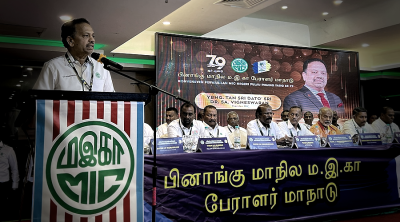By Dr Yoong Lee Yeen / Professor Dr Moy Foong Ming

According to Ministry of Health statistics, hypertension is the number one underlying comorbidity of COVID-19 deaths.1
Patients with hypertension had a 1.82 times higher risk for critical COVID-19 and 2.17 times increased risk for COVID-19 mortality.2 Uncontrolled blood pressure was associated with greater risks of adverse outcomes, including heart failure, ICU admission and mortality among COVID-19 patients.3
Hence, optimizing the control of hypertension is essential to improve the health-related quality of life and survival in the COVID-19 pandemic.
In order to have good control of blood pressure among individuals with hypertension, they are required to have good compliance to medication and regular blood pressure monitoring in addition to lifestyle and diet modifications.
Among the lifestyle and diet modifications that are recommended, one that is recommended to all individuals with hypertension regardless of pharmacological intervention, is the DASH (Dietary Approaches to Stop Hypertension) diet.4
This diet has been demonstrated to be effective in managing blood pressure, with the original DASH trial demonstrating a decrease in systolic blood pressure of 11.4 mmHg and a decrease in diastolic blood pressure of 5.5 mmHg compared to control participants.5
The DASH diet advocates the consumption of fiber and potassium via fruits and vegetables, reduction in total and saturated fat via a reduction in meat and animal products, and intake of adequate protein via lean meat and low-fat dairy products instead of high fat or processed meat.6
The key features of the DASH diet are as the following:
1. Have 8 to 10 servings of fruits and vegetables per day. (One serving is equivalent to one cup of raw leafy vegetable or half cup of cooked vegetables, one whole apple/orange/pear or one cut slice of papaya, pineapple etc).
2. Grains such as brown rice, whole wheat bread or pasta, cereals and oatmeal are preferred.
3. Lean meats, poultry and fish to be complemented with nuts, seeds and legumes as protein sources.
4. Milk and milk products (such as cheese and yogurt) should be fat-free or low-fat.
5. Avoid food that is high in saturated fat (fatty or red meat).
6. Reduce salt intake by replacing salt with herbs, spices, lemon, lime, vinegar, and salt-free seasoning blends in cooking. Avoid preserved and canned foods.
7. Minimize sweets and added sugars.
8. Avoid high fat foods.
The DASH diet works best synergizing with regular physical activities for at least 150 minutes of moderate-intensity physical activity per week.
Apart from adopting DASH diet and regular physical activities, practicing other healthy lifestyle includes maintaining a healthy weight, limiting alcohol intake and avoid tobacco use, getting sufficient sleep and coping with stress are crucial for hypertension prevention.
With the more sedentary lifestyle brought by the Movement Control Order (MCO), we should take hypertension prevention and control more seriously to live well through this COVID-19 pandemic.
Choose to eat and live healthily. Protect ourselves, protect our loved ones!
References:
1 Institute for Clinical Research. (2020). COVID-19 Mortality Statistic in Malaysia.
2 Du, Yanbin, Zhou, Nan, Zha, Wenting, & Lv, Yuan. (2021). Hypertension is a clinically important risk factor for critical illness and mortality in COVID-19: A meta-analysis. Nutrition, Metabolism and Cardiovascular Diseases, 31(3), 745-755
3 Ran, Jinjun, Song, Ying, Zhuang, Zian, Han, Lefei, Zhao, Shi, Cao, Peihua, . . . Yang, Lin. (2020). Blood pressure control and adverse outcomes of COVID-19 infection in patients with concomitant hypertension in Wuhan, China. Hypertension Research, 43(11), 1267-1276.
4 National Lung, Heart and Blood Institute. (2015). In Brief: Your Guide To Lowering Your Blood Pressure With DASH.
5 Kwan, M. W., Wong, M. C., Wang, H. H., Liu, K. Q., Lee, C. L., Yan, B. P., . . . Griffiths, S. M. (2013). Compliance with the Dietary Approaches to Stop Hypertension (DASH) diet: a systematic review. PLoS One, 8(10), e78412.
6 Tyson, C. C., Nwankwo, C., Lin, P. H., & Svetkey, L. P. (2012). The Dietary Approaches to Stop Hypertension (DASH) eating pattern in special populations. Curr Hypertens Rep, 14(5), 388-396.
(Dr Yoong Lee Yeen and Professor Dr Moy Foong Ming, Department of Public Health, Universiti Malaya Medical Center, in conjunction with World Hypertension Day on May 17, 2021.)
ADVERTISEMENT
ADVERTISEMENT


































